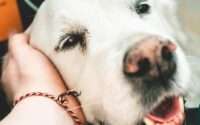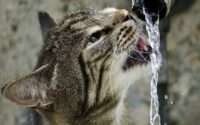Can Hairless Cats Grow Hair? Here’s What You Need to Know!
Hairless cats, often a source of curiosity and fascination, represent a unique niche within the feline world. Known for their distinctive appearance, these cats draw attention wherever they go.
Among the many questions surrounding these enigmatic creatures, one stands out prominently: Can hairless cats grow hair? It’s a query that has sparked debate and speculation among cat enthusiasts and researchers alike.
In this comprehensive exploration, we delve into the world of hairless cats to uncover the reality behind this enduring myth. Through careful examination and expert insights, we aim to shed light on whether hairless cats truly have the potential to sprout fur.
Understanding Hairless Cats
Enter the captivating world of hairless cats, where uniqueness reigns supreme. Discover the distinctive traits and genetic mysteries that define these fascinating felines. From the renowned Sphynx to the charming Bambino, each breed brings its own allure to the table. Let’s delve into the genetic makeup and endearing characteristics of these remarkable creatures.
Breeds of hairless cats
- Sphynx: Perhaps the most well-known of the hairless breeds, the Sphynx cat exudes a sense of elegance with its sleek, muscular body and prominent ears.
- Donskoy: Originating from Russia, the Donskoy cat boasts a unique appearance with its wrinkled skin and distinctive facial features.
- Peterbald: With its slender build and striking almond-shaped eyes, the Peterbald cat captivates admirers with its graceful demeanor.
- Bambino: A relatively recent addition to the hairless cat family, the Bambino combines the charming appearance of a dwarf cat with the distinctive features of its hairless counterparts.
The genetic makeup of hairless cats plays a crucial role in determining their unique phenotype. Mutations in specific genes result in the absence of fur, giving rise to the characteristic bald appearance observed in these breeds.
Beyond their lack of fur, hairless cats possess a number of distinctive traits that set them apart from their furry counterparts. From their warm, velvety skin to their affectionate personalities, these cats leave a lasting impression on those fortunate enough to encounter them.
Development of Hair in Hairless Cats
As with all kittens, hairless felines begin their journey into the world with a delicate and vulnerable appearance. At birth, these kittens may appear completely devoid of fur, their smooth skin offering a glimpse into the unique traits that define their breed. However, over time, they undergo remarkable transformations as they progress through key growth milestones.
- Appearance at birth: Hairless kittens are typically born with a soft, downy layer of fuzz covering their bodies, providing them with a degree of warmth and protection during their earliest days. Despite their initial lack of fur, these kittens possess an unmistakable charm and resilience that endears them to those who care for them.
- Growth milestones: As hairless kittens mature, they gradually develop distinct patterns of growth, both in terms of physical development and potential hair growth. While some may retain their smooth, bald appearance into adulthood, others may exhibit signs of fur growth as they reach maturity.
The process of hair growth in hairless cats is influenced by a variety of factors, ranging from genetic predispositions to environmental conditions and overall health.
- Genetics: Genetic factors play a fundamental role in determining whether a hairless cat will exhibit signs of fur growth. Certain breeds may possess genes that predispose them to developing a partial or full coat of fur, while others may remain consistently bald throughout their lives.
- Health conditions: The overall health and well-being of a hairless cat can impact its ability to grow hair. Factors such as nutrition, immune function, and hormonal balance all play a crucial role in supporting healthy hair growth and maintaining optimal skin health.
- Environmental factors: The environment in which a hairless cat is raised can also influence its hair growth patterns. Factors such as temperature, humidity levels, and exposure to sunlight may impact the cat’s skin health and contribute to variations in fur growth.
Common Misconceptions about Hairless Cats and Hair Growth
Misconceptions about hairless cats abound, but let’s set the record straight. Despite popular belief, not all hairless cats remain completely bald throughout their lives. Let’s debunk these myths together.
Misconception #1: All hairless cats stay bald: Contrary to popular belief, not all hairless cats remain completely bald throughout their lives. While some breeds may indeed maintain their smooth, hairless appearance, others may experience varying degrees of fur growth as they mature.
Misconception #2: Hairless cats don’t need grooming: Despite their lack of fur, hairless cats still require regular grooming to maintain optimal skin health. Grooming helps to remove excess oils, debris, and dead skin cells, preventing potential skin issues and promoting overall comfort and well-being.
Misconception #3: Hairless cats are prone to more health issues due to lack of hair: While hairless cats may require special care to maintain their skin health, they are not inherently more prone to health issues than their furry counterparts. With proper nutrition, regular veterinary care, and attentive grooming routines, hairless cats can lead happy, healthy lives.
Stay tuned as we delve deeper into the intriguing world of hair growth in hairless cats, exploring case studies, scientific research, and expert opinions to uncover the truth behind this captivating phenomenon.
Hair Growth in Hairless Cats: Fact or Fiction?
Throughout the years, numerous case studies have documented instances of hair growth in hairless cats, challenging the notion that these felines are destined to remain bald. These studies offer compelling evidence of the potential for fur development in certain individuals within hairless cat breeds.
Researchers have dedicated considerable efforts to unraveling the mysteries surrounding hair growth in hairless cat breeds. Through meticulous observation and controlled experiments, scientists have sought to understand the genetic, physiological, and environmental factors that contribute to variations in fur growth among these unique felines.
Veterinarians, breeders, and other experts in the field of feline genetics have weighed in on the debate surrounding hair growth in hairless cats. While opinions may vary, many experts acknowledge the potential for hairless cats to exhibit fur growth under certain conditions, highlighting the importance of individual variability and genetic diversity within these breeds.
Factors Affecting Hair Growth in Hairless Cats
Unlocking the secret to hair growth in hairless cats involves understanding several crucial factors. From diet and nutrition to hormonal balance and skincare routines, each element plays a vital role in promoting fur growth. Let’s explore these factors and discover how they contribute to the health and appearance of a hairless cat’s skin, potentially leading to the growth of a full coat of fur.
- Diet and nutrition: Proper nutrition is essential for supporting healthy skin and coat growth in hairless cats. A balanced diet rich in essential nutrients, such as omega-3 fatty acids and vitamins A and E, can promote optimal skin health and enhance the potential for fur growth in these felines.
- Hormonal balance: Hormonal imbalances can affect hair growth patterns in hairless cats, influencing the development and maintenance of fur. Ensuring proper hormonal balance through regular veterinary care and appropriate medical interventions can help support healthy hair growth in these unique felines.
- Skin care routines: Regular grooming and skincare routines are vital for maintaining the health and appearance of a hairless cat’s skin. Gentle cleansing, moisturizing, and exfoliating can help remove debris and dead skin cells, promoting a healthy skin environment conducive to fur growth.
- Veterinary care and regular check-ups: Routine veterinary care is essential for monitoring the overall health and well-being of hairless cats. Regular check-ups allow veterinarians to assess skin health, address any underlying medical issues, and provide guidance on optimizing conditions for fur growth in these special felines.
Tips for Encouraging Hair Growth in Hairless Cats
Encouraging hair growth in hairless cats requires a strategic approach. From nutrition and grooming to minimizing stress and seeking specialized veterinary care, each step plays a vital role. Let’s explore these tips to help your hairless cat thrive and potentially develop a full coat of fur.
- Proper nutrition for skin and coat health: Selecting a high-quality cat food formulated specifically for skin and coat health is essential for supporting hair growth in hairless cats. Look for foods rich in essential fatty acids, vitamins, and minerals to promote optimal skin health and fur development.
- Regular grooming routines: Establishing a regular grooming routine is key to maintaining healthy skin and encouraging hair growth in hairless cats. Use a gentle brush or grooming mitt to remove dead skin cells and stimulate blood flow to the skin, promoting a healthy environment for fur growth.
- Maintaining a stress-free environment: Stress can negatively impact a hairless cat’s overall health and may hinder hair growth. Create a calm and nurturing environment for your cat, providing plenty of opportunities for relaxation and mental stimulation to help reduce stress levels.
- Consulting with a veterinarian for specialized care: If you notice any concerning changes in your hairless cat’s skin or fur growth, don’t hesitate to consult with a veterinarian who specializes in feline health. Your vet can assess your cat’s individual needs and provide tailored recommendations for promoting hair growth and maintaining optimal skin health.
Conclusion
In this exploration of the myth surrounding hairless cats and hair growth, we’ve uncovered a wealth of information highlighting the potential for fur development in these unique felines. From the early stages of kittenhood to the factors influencing hair growth and the importance of proper care, we’ve delved deep into the intricacies of this captivating phenomenon.
While the question of whether can hairless cats grow hair may not have a definitive answer, our exploration has revealed the complexity of this topic and the potential for fur growth in certain individuals within hairless cat breeds. With proper care, nutrition, and attention to their unique needs, hairless cats can thrive and may even surprise us with their ability to sprout fur.
For owners of hairless cats, this journey serves as a reminder of the importance of embracing the unique characteristics of these special felines. Whether your cat remains bald or experiences fur growth, know that they are cherished for who they are, not just for their appearance.
As our understanding of hairless cats and their potential for hair growth continues to evolve, there remains much to explore and discover. We invite you to join us in furthering the conversation, sharing insights, and celebrating the beauty and diversity of hairless cats in all their forms.
Frequently Asked Questions
Do all hairless cats remain bald throughout their lives?
No, while some hairless cats may remain bald, others can exhibit fur growth as they mature.
Are hairless cats prone to more health issues due to the lack of hair?
Not necessarily. With proper care, hairless cats can lead healthy lives similar to their furry counterparts.
Can environmental factors affect hair growth in hairless cats?
Yes, factors like temperature, humidity, and exposure to sunlight can influence fur growth in hairless cats.
Do hairless kittens start with no fur at all?
Hairless kittens may have a soft, downy layer of fuzz at birth, which may change as they grow.
Can genetics play a role in determining whether a hairless cat grows fur?
Yes, genetic factors significantly influence fur growth in hairless cats.
Do hairless cats require grooming even though they lack fur?
Yes, regular grooming is essential for maintaining the skin health of hairless cats and promoting fur growth.
Is diet important for promoting fur growth in hairless cats?
Yes, a balanced diet rich in essential nutrients supports skin health, which in turn can influence fur growth.
Can hormonal imbalances affect fur growth in hairless cats?
Yes, hormonal balance plays a crucial role in regulating fur growth in hairless cats.
Are there any specialized care routines for encouraging fur growth in hairless cats?
Yes, specific grooming techniques, skincare routines, and veterinary care can help promote fur growth in hairless cats.
Can stress impact the ability of hairless cats to grow fur?
Yes, stress can negatively affect a hairless cat’s overall health, which may indirectly influence fur growth.





